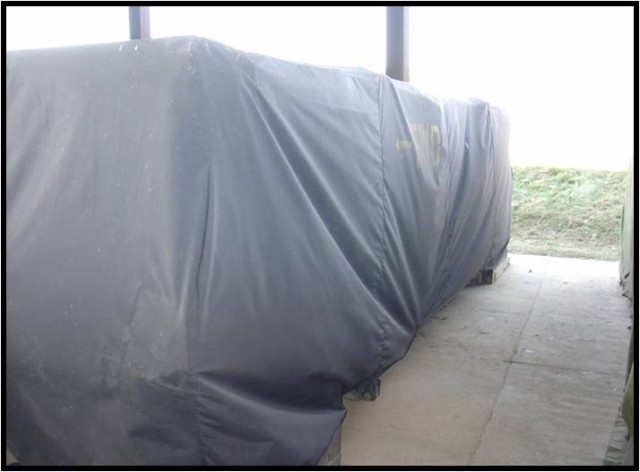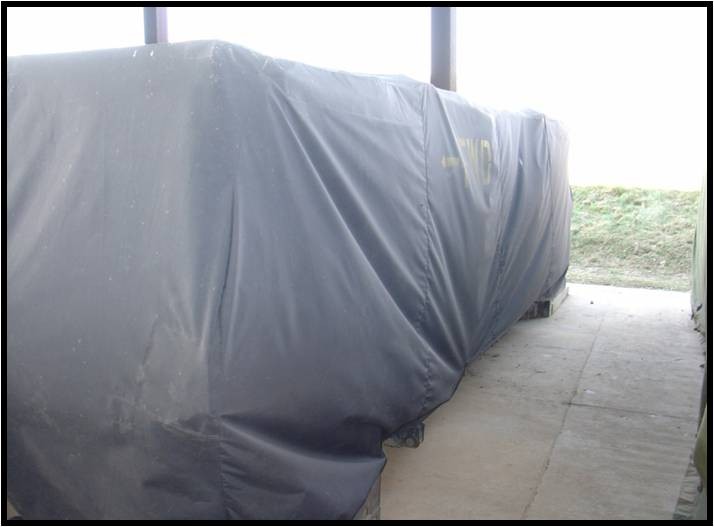The U.S. Army is using dehumidification systems, special covers, composite
materials and galvanizing techniques among other things as part of a
stepped-up effort to mitigate the damaging effects of corrosion of its
equipment and infrastructure, a phenomenon estimated by the Virginia-based
Logistics and Maintenance Institute (LMI) to cost the service up to $5.5
billion per year, service officials said.
"We have spent a lot of time identifying strengths and weaknesses and
putting together plans to attack deficiencies in corrosion prevention and
control (CPC). We have a renewed emphasis," said Dr. Roger Hamerlinck,
Senior Acquisition Policy Specialist. "We have new technologies that are
being identified all the time that give better corrosion resistance."
The LMI also found that corrosion accounts for eight percent of weapons'
"down-time" or instances wherein they do not function properly.
While substantial anti-corrosion efforts have been underway throughout
the Department of Defense and Army for many years, it was the 2009 National
Defense Authorization Act which required the services to identify a
corrosion executive; the Army's corrosion executive -- Wimpy Pybus, Deputy
Assistant Secretary of the Army for Acquisition Policy and Logistics ---
emphasizes the Army 's corrosion prevention and control efforts require an
Army and Government-wide approach.
"The responsibility for CPC is a shared one. Every service member, Federal
civilian, and Government contractor share in the design, support, operation
and maintenance of our equipment and infrastructure. Together we enable
victory," Pybus states in the Fiscal Year 2009 Army Annual Report of
Corrosion Prevention and Control (CPC).
Acquisition managers are required to prepare corrosion prevention and
control plans intended to influence the acquisition process and impact
design selections. For instance, acquisition personnel are tasked with
selecting materials that will be more corrosion resistant. In addition,
corrosion considerations are being woven into the requirements process to
best facilitate a long-term prevention approach, Army officials said.
Over the long term, the Army corrosion prevention and control strategic
plan is intended to influence every aspect of equipment and infrastructure
lifecycle; this begins with the defining of the requirements for corrosion
prevention and control, Hamerlinck said.
"Designs should use the latest CPC technologies and the operation and
sustainment system must ensure that the inherent design characteristics are
maintained. If the asset is not maintained as designed, it may not matter
how well the design considered CPC," Hamerlinck said.
Techniques
Galvanizing techniques which apply Zinc to traditional steel are
increasingly being chosen as methods of improving corrosion resistance in
certain equipment, Army officials said. Two-sided galvanizing, involving
both the interior and exterior of a vehicle, is also proving worthwhile.
Dehumidification systems are also being used to reduce damaging moisture
inside vehicles, Hamerlinck said.
"There is a certain amount of moist air inside a vehicle that can't go
anywhere. That environment gets into the electronics. If we don't draw that
moisture out of there those things can cause a lot of damage. We're finding
them really useful on aviation platforms," said Hamerlinck. "The
dehumidification systems may cost 13,000 dollars, but in some cases you are
protecting a $38 million dollar piece of equipment."
The Army is also having success using special, corrosion-reducing covers
placed over certain pieces of equipment, such as aircraft and missile
systems.
For example, canister covers for Patriot Missile batteries have
dramatically increased the longevity of desiccant materials placed inside
the systems to keep moisture out, Hamerlinck said.
"With covers they [the missiles] are going nine months and counting without
replacing the desiccant. There is a cost savings here and fewer times that
we have to open the container," he said Hamerlinck.
Other notable efforts include the construction of an all-composite bridge
built over the last year at Fort Bragg, N.C., Hamerlinck said.
"It is built from 100-percent recycled industrial grade plastics. It is
rated to be able to hold an M1 tank and that technology has proven out. We
are in the process of observing its performance over the next three years so
we can determine the return on the investment," he said.
Other challenges being addressed by the Army include examining how
packing, storing and transporting equipment impacts corrosion, Hamerlinck
said.
Metrics
The Department of Defense Corrosion Prevention and Control Integrated
Product Team has currently identified three metrics by which they will
determine success or failure in addressing corrosion: cost,
readiness/availability, and safety.
The Services have identified a scale for determining the extent of
corrosion to a particular piece of equipment measured in five distinct
stages:
Stage 0 shows no visible corrosion.
Stage 1 is simple discoloration and staining. Stage 2 is loose rust or
pitting of the surface along with minor etching. Stage 3 is rust, minor
etching, pitting, more extensive surface damage.
Stage 4 is rust, etching, and pitting that has progressed to the point
where the life of the item has been affected.
The stages identify the severity of the corrosive effect and they provide
an indicator of the need for a specific level of maintenance, Hamerlinck
said.
"Once an indication of corrosion is present, it is important to take
appropriate corrective action because at that point it will take less time
and expense to remedy the situation," he said. "One of our greatest
challenges today is in training our military and civilian workforce to
recognize the many forms of corrosion. There are as many as 16 different
forms of corrosion, depending upon which book you read, such as pitting or
cracking."
With this in mind, operators and maintainers of equipment need to be able
to recognize and properly categorize corrosion in all its forms in order to
take appropriate corrective or preventive actions, Hamerlinck said.


Social Sharing